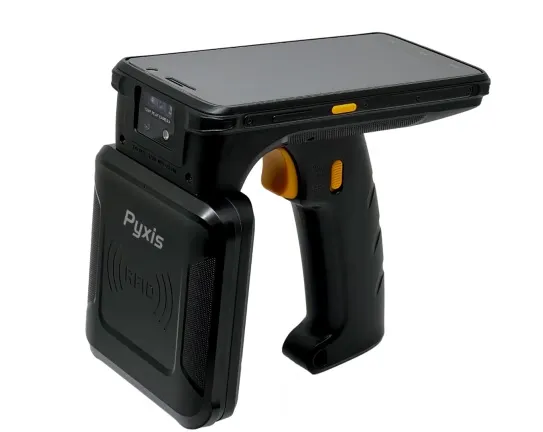The general RFID market has seen substantial growth over the last few years, with successful public offerings and rapid growth in terms of the number of RFID tags sold, according to a new report by IDTechEx.
Vendors are now exploring allied technologies with RFID sensors at the forefront of this. RFID sensors combine a sensors system (such as monitoring temperature, humidity, shock, pressure or moisture) with RFID communications. This has been enabled thanks to new chipsets, both HF (NFC) and UHF (RAIN)
March 6, 2017
Read time: 3 mins
The general RFID market has seen substantial growth over the last few years, with successful public offerings and rapid growth in terms of the number of RFID tags sold, according to a new report by 6582 IDTechEx.
Vendors are now exploring allied technologies with RFID sensors at the forefront of this. RFID sensors combine a sensors system (such as monitoring temperature, humidity, shock, pressure or moisture) with RFID communications. This has been enabled thanks to new chipsets, both HF (NFC) and UHF (RAIN) which are dedicated to support sensor platforms and therefore make RFID sensors simpler to make and lower cost in addition to the increasing maturity and wider scale adoption of RFID reader infrastructure. Additionally, new technologies from printed sensors and flexible batteries to bio sensing films meet unmet needs and provide differentiation.
Several different technology categories exist: Passive RFID sensors with no on board power source; Passive RFID tags with bio sensors, with no board power source; Battery assisted passive RFID sensors; ‘Chipless’ RFID sensors, without a conventional silicon chip.
From these options, most can be bought to operate at either HF or UHF RFID, with HF RFID options offering a wider reader network thanks to NFC enabled consumer electronic devices albeit with limited read range of UHF devices with longer read range but requiring more expensive reader systems.
The RF protocols developed for RFID are effectively being used as a means of data transfer of sensory information. RFID Sensors 2017-2027 is the first report that covers all these options, the players behind the ICs, sensor tags and systems, the applications, trends and market size, forecast over a ten year period. The report draws comparisons form and assesses the related data logger market, and explores the role for RFID Sensors within that. SWOT (strengths, weaknesses, opportunities, threats) reports are given for the leading players, along with application case studies and impartial IDTechEx assessment of the whole sector.
The report provides detailed forecast breakdowns of the entire sector and, in addition to assessing the current capabilities of the existing solutions, the research also includes the progress with RFID sensor systems based on recent technology innovations including printed temperature sensors and antennas, flexible batteries and flexible transistor circuits.
Vendors are now exploring allied technologies with RFID sensors at the forefront of this. RFID sensors combine a sensors system (such as monitoring temperature, humidity, shock, pressure or moisture) with RFID communications. This has been enabled thanks to new chipsets, both HF (NFC) and UHF (RAIN) which are dedicated to support sensor platforms and therefore make RFID sensors simpler to make and lower cost in addition to the increasing maturity and wider scale adoption of RFID reader infrastructure. Additionally, new technologies from printed sensors and flexible batteries to bio sensing films meet unmet needs and provide differentiation.
Several different technology categories exist: Passive RFID sensors with no on board power source; Passive RFID tags with bio sensors, with no board power source; Battery assisted passive RFID sensors; ‘Chipless’ RFID sensors, without a conventional silicon chip.
From these options, most can be bought to operate at either HF or UHF RFID, with HF RFID options offering a wider reader network thanks to NFC enabled consumer electronic devices albeit with limited read range of UHF devices with longer read range but requiring more expensive reader systems.
The RF protocols developed for RFID are effectively being used as a means of data transfer of sensory information. RFID Sensors 2017-2027 is the first report that covers all these options, the players behind the ICs, sensor tags and systems, the applications, trends and market size, forecast over a ten year period. The report draws comparisons form and assesses the related data logger market, and explores the role for RFID Sensors within that. SWOT (strengths, weaknesses, opportunities, threats) reports are given for the leading players, along with application case studies and impartial IDTechEx assessment of the whole sector.
The report provides detailed forecast breakdowns of the entire sector and, in addition to assessing the current capabilities of the existing solutions, the research also includes the progress with RFID sensor systems based on recent technology innovations including printed temperature sensors and antennas, flexible batteries and flexible transistor circuits.








